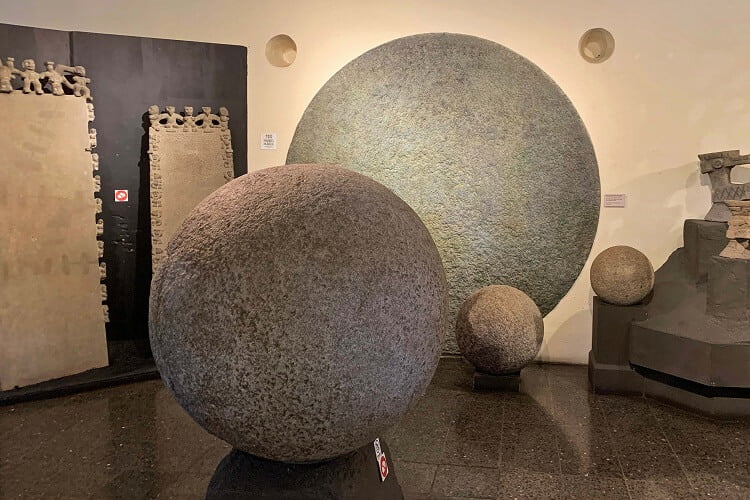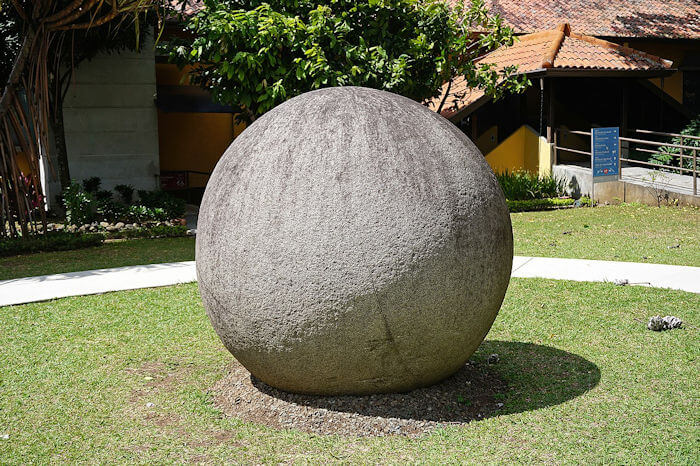
Six Ancient Giant Stone Spheres Recovered From The Diquís Delta, Costa Rica
The ancient giant stone spheres in Costa Rica in the Diquís Delta, in southern Costa Rica, are considered unique examples of the complex social, economic, and political systems of the period AD 500–1500.
By: Jan Bartek | MessageToEagle.com
The ancient giant stone spheres in Costa Rica in the Diquís Delta, in southern Costa Rica, are considered unique examples of the complex social, economic, and political systems of the period AD 500–1500.
Varying in size from between 0.7m and 2.57m in diameter, the purpose of the unique Pre-Columbian stone spheres has long fascinated scientists.

Researchers from INAH now report they have recovered six ancient stone spheres from the Chiriquí period (800–1550 AD), and two of them have undergone a ‘major surgery due to notorious deterioration.
The Pre-Columbian petrospheres are a legacy of the Diquís culture. As many as 300 stone spheres have been previously unearthed during excavations. The spheres were scattered across four archaeological sites in the region.
Many of the stone spheres are aligned in an east-west direction, associated with sunrise and sunset, which shows that the Diquís culture was interested in astronomy.
The Diquis culture was a pre-Columbian indigenous culture of Costa Rica that flourished from AD 700 to 1530. The word “diquís” means “great waters” or “great river” in the Boruca language. The Diquis formed part of the Greater Chiriqui culture that spanned from southern Costa Rica to western Panama.
Focused on preserving the remarkable heritage site of Costa Rica and the world, a binational project, in charge of the Federal Ministry of Culture, through the National Institute of Anthropology and History (INAH), and the National Museum of Costa Rica (MNCR), investigates, preserves and restores the ancient stone spheres of the Diquís delta region, in the south of the Central American country.
At the Finca 6, an archaeological site located in the canton of Osa, scientists concentrated on two areas that showed notorious deterioration. When scientists discovered the stone spheres had been damaged by changes in temperature and humidity in the environment, and extreme weather conditions such as hurricanes, floods, and storms, researchers decided the spheres must undergo a ‘major surgery.’
Scientists also inform traces left by the banana company that exploited the Central American fields in the 20th century endangered the historical stone spheres.
The coordinators of the binational initiative, the archaeologist and restorer of the ENCRyM-INAH, Isabel Medina-González, and the archaeologist of the MNCR, Javier Fallas Fallas, reported that the spheres designated as B and D required more significant efforts depending on the ‘ life story of each one.

The comprehensive conservation-restoration process in spheres B and D, measuring 1.91 and 1.92 meters in diameter, respectively, began with their unearthing since, as a preventive conservation measure.
“The intervention included surface cleaning and stabilization through edging and patches of enriched lime-sand mortar, to slightly increase the hardness and the placement of protective layers with these mortars in the relevant places,” Isabel Medina-González explained.
“Subsequently, the volumetric and chromatic reintegration was carried out to rebury the elements with layers of geotextile, gravel, and sand around them.
“We have verified that this allows a homogenization of temperature and humidity, avoids contact with the acidity of the clay soil, and prevents the growth of vegetation in the vicinity,” Javier Fallas said.
He also added that scientists are attempting to prevent further damage to the Costa Rica spheres by offering them temporary protection. This will be achieved by setting up roofs over the areas this season.
The spheres of the Diquís river delta are an example of the mastery achieved by indigenous sculptors, and due to their outstanding universal value, the site is on the World Heritage List since 2014.
